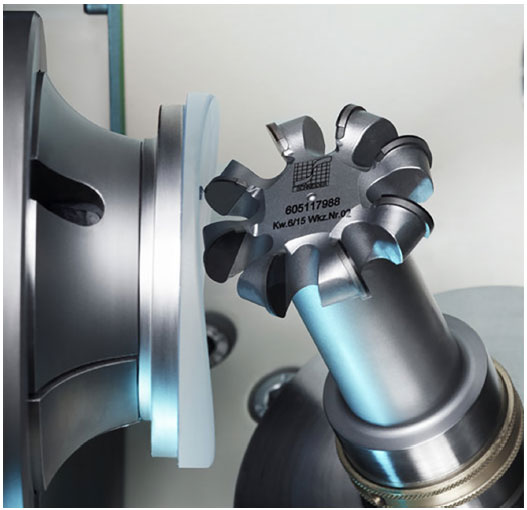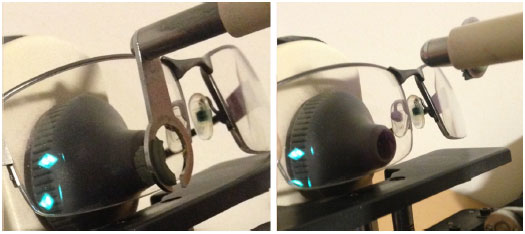Celso Marcelo Cunha
DOI: 10.17545/eoftalmo/2017.115
ABSTRACT
In recent decades, progressive lenses have become the most commonly used optical correction for emmetropic presbyopic individuals. The manufacturing process of PLs underwent an innovative change with the development of the freeform surface design. Several characteristics of PLs are covered in this review.
Keywords: Lenses; Refraction, Ocular; Presbyopia.
RESUMO
O uso dos óculos com lentes progressivas é a correção óptica mais utilizada nos présbitas amétropes nas últimas décadas. O processo de fabricação dessas lentes passou por uma inovadora transformação com a chegada da surfaçagem de forma livre. Vários aspectos são abordados nesta revisão sobre essas novas lentes.
Palavras-chave: Lentes; Refração; Presbiopia.
RESUMEN
El uso de lentes progresivos es la corrección óptica más utilizada en los présbitas amétropes en las últimas décadas. El proceso de fabricación de esos lentes pasó por una innovadora transformación con la llegada del tallado de forma libre. Se abarcan varios aspectos en esta revisión sobre dichos lentes.
Palabras-clave: Lentes, Refración Ocular; Presbiopía.
The far, intermediate, and near viewing zones of PALs are not visibly separated. However, a gradual and continuous increase in spherical power is achieved by changing the curvature of one of the surfaces, which will produce unwanted astigmatism (UA) on the sides of the progressive corridor, regardless of the level of evolution. However, the amount and distribution of UA varies according to the proposed design of the lens.1
These lenses evolved through several generations, and the conventional surfacing manufacturing process was maintained up to the sixth generation on. The current free-form surfacing (FFS) design began to be used from the seventh generation. Lenses with the FFS design are produced by several manufacturers. Nomenclature is not standardized yet, and FFS has other synonyms, including digital surfacing and three-dimensional surfacing.
FFS is a process of making lens surfaces and has been the focus of attention of PAL manufacturers through-out the world once the process has recently entered the North American and Brazilian markets. The conventional manufacturing process of PALs involves injecting liquid resin into molds, which after the resin hardening, produce complex progressive curves in those lenses. In contrast, FFS involves a thinning process in three axes (X, Y, and Z) using three elements: FFS machinery (Figure 1), software, and a PAL project. FFS machines are able generate a complex progressive surface in approximately 60 s using a single lens blank.2

FFS-based PALs can be produced with the progressive side on the front surface of the lens, on the back surface, or on both surfaces. Undoubtedly, surfacing the back curve of PAL helps to increase the intermediate and near viewing zones by the same effect achieved with the adjustment of the pantoscopic angle. Lenses with two progressive surfaces allow dividing the production into two steps: correcting horizontal aberrations on the back surface and vertical aberrations on the front surface. Correcting horizontal aberrations on the back surface preserves the keyhole effect, as observed in second-generation lenses, and correcting vertical aberrations on the front surface would prevent the intermediate viewing zone from reducing the near viewing zone because they are somewhat correlated; therefore, broad independent viewing zones would not be obtained with additions ≥ of 2.00 D.3,4,5 Examples of PALs and the location of their progressions are shown in Table 1.
It is sometimes mistakenly believed that FFS may correct all aberrations on a lens surface. However, that would depend on the lens design and software used once the process involves more than simply changing a front surface design to a back surface design.
The benefits of PALs with FFS include the following:
• Continuous availability of the optimum base curve
• Decentration of the monocular pupillary distance (Monocular PD) in the near and far viewing zones according to convergence
• Adjustments in the height of the progressive corridor
• Adjustments in prism thinning
• Decrease in UA
The availability of the optimum base curve regardless of the stock of PALs is an unquestionable benefit of FFS for the optical sector when compared with conventional lenses. It was thought that the changes in the base curve proposed by the Tscherning theory could only reduce astigmatic aberrations, which occur by the passage of oblique light through lenses. However, recent studies indicate that the optimum curves decrease UA and increase the viewing zones, especially in the near viewing zone of PALs.6
The decentration adjustments in monocular PD of the near and far viewing zones demonstrate the significant improvements made in these lenses. The fixed convergence of conventional PALs depends on the lens design and is usually 2.5 mm for each lens. The average pupillary distance of the Brazilian presbyopic population is 65 and 62 mm for men and women, respectively, and aside from the minor effects of other factors on convergence, these patients usually converge to 5 mm when they use near vision. This convergence allows FFS-based PALs and conventional PALs to have the same functions. However, this convergence is only an average value for the general population; 34% of a recently studied female population had a convergence different from 5 mm, which would allow larger binocular balance surfaces in the near viewing zone using FFS-based PALs.7
The adjustments for the user’s lifestyle habits may be suggested, making the beginning of the progression lower for those who use much of the far vision for example. As well as the reduction of the height of the progressive corridor on vertically shorter eye glass frames may be requested.
The greater control of prism thinning allows the manufacture of much thinner and lighter PALs as well as improving the prismatic balance in anisotropies with slab-off, which is the adjustment of prismatic induction in the PAL’s near viewing zone, corresponding to a distance of 8–12 mm from the prism reference point.8
Other improvements include the reduction of UA and consequently the increase in the useful fields of view of PALs.
In addition to those benefits, the design of FFS-based PALs can be customized for each patient. Those adjustments may be related to the prescribed refraction, eye glass frame chosen, and life habits of users. Studies have demonstrated the superiority of PALs in clinical trials.9,10
Special care should be taken when measuring those lenses using common lensmeters. Lowering the lens holder to measure the near power would yield dioptric values different from the prescribed ones (Figure 2A). In this case, the glasses should be positioned as they would be in front of the eyes of the users without lowering the lens holder (Figure 2B).11

REFERENCES
1. Sheedy JE, Campbell C, King-Smith E, Hayes JR. Progressive Powered Lenses: the Minkwitz Theorem. Optom Vis Sci. 2005;82(10):916-24.
2. Chamorro E, Alonso J, Cleva JM, Crespo D. Free-Form Lenses: Why My Patient is Not Wearing My Prescription? JOJ Ophthalmol. 2017;2(1):555577. DOI: 10.19080/JOJO.2017.02.555576
3. Huang C, Raasch TW, Yi AY, Bullimore MA. Comparison of progressive addition lenses by direct measurement of surface shape. Optom Vis Sci. 2013;90(6):563-75. DOI: 10.1097/OPX.0b013e3182923ff6
4. Cunha CM, Correia RJB, Sardinha Neto AA. Lentes progressivas – análise dos campos intermediário e de perto por deflexometria. Arq Bras Oftalmol. 2013;76(1):33-7. DOI: 10.1590/S0004-27492013000100010
5. Sheedy JE. Progressive addition lenses – matching the specific lens to patient needs. Optometry. 2004;75(2):83-102. DOI: 10.1016/S1529-1839(04)70021-4
6. Arroyo R, Crespo D, Alonso J. Influence of the base curve in the performance of customized and classical progressive lenses. Optom Vis Sci. 2013;90(3):282-92. DOI: 10.1097/OPX.0b013e3182814d85
7. Cunha CM, Correia RJB. Distância interpupilar e convergência na população présbita. Rev Bras Oftalmol. 2015;74(5):303-5. DOI: 10.5935/0034-7280.20150062
8. McCarthy P. Anisometropia: what difference does it make? Optom Pract. 2013;14(1):1-10 [acesso 2017 Dec 8]. Disponível em: https://pdfs.semanticscholar.org/ba16/b53e72ed321609f60ebba965bb58582676f9.pdf
9. Han SC, Graham AD, Lin MC. Clinical assessment of a customized free-form progressive add lens spectacle. Optom Vis Sci. 2011;88(2):234-43. DOI: 0.1097/OPX.0b013e31820846ac
10. Forkel J, Reiniger JL, Muschielok A, Seidemann A, Baumbach P. Personalized Progressive Addition Lenses: Correlation between Performance and Design. Optom Vis Sci. 2017;94(2):208-18. DOI: 10.1097/OPX.0000000000001016
11. Meister DJ, Fisher SW. Progress in the spectacle correction of presbyopia. Part 2: Modern progressive lens technologies. Clin Exp Optom. 2008;91(3):251-64. DOI: 10.1111/j.1444-0938.2008.00246.x
Funding source: None
CEP Approval: Not applicable
Conflicts of interest: None
Received on:
November 22, 2017.
Accepted on:
December 6, 2017.